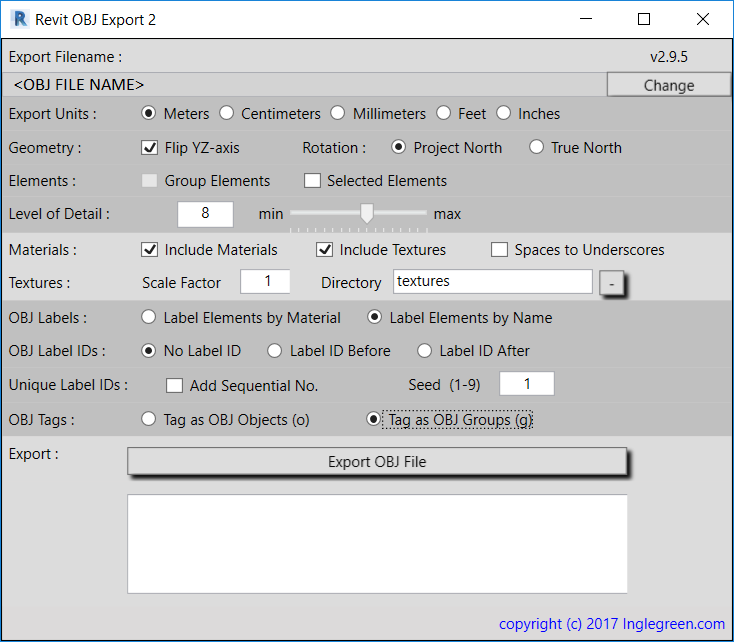P
by pechu on 30 Jun 2020, edited 13 Jul 2020
#
Hi,
I'm trying to export my Revit model to Blender to create some animations, however when I export as IFC4, the materials are not transferred correctly (missing textures). I've also tried exporting as .dae but it was even worse. What is the best practice to export the model from Revit to Blender? Is there a way to keep the materials after export or do I have to assign them manually in Blender after export?
M
by Moult on 30 Jun 2020
#
Most programs, including Revit do not support exporting textures into IFC as far as I am aware. Revit has a long list of outstanding bugs related to material data, unfortunately.
Give FBX a try, but if not, you may need to redo the textures in Blender. If the FBX doesn't go ahead, I'd recommend sticking to IFC and then assigning textures again in Blender.
Materials should be kept, just textures may be lost in IFC. If the material itself is lost, please let me know, as it may be a bug.
C
by Cyril on 30 Jun 2020, edited 30 Jun 2020
#
@Moult said:
Give FBX a try, but if not, you may need to redo the textures in Blender. If the FBX doesn't go ahead, I'd recommend sticking to IFC and then assigning textures again in Blender.
From my tries on small subsets, no material was exported on duct, air terminal and duct accessories with FBX. (Maybe I need to look for an hidden option somewhere)
You could give a try with :
The last has free trial but glTF 2.0 is supposed to give better results.
S
by shanmama on 5 Jul 2020
#
IFC4 is not the "perfect" version. I think IFC 2X3 CV2.0 is better one. You could try it?
S
by stephen_l on 5 Jul 2020
#
There is an .obj exporter for revit, this format will handle basic material with texture.
D
by dimitar on 5 Jul 2020, edited 6 Jul 2020
#
I use inglegreen's OBJ exporter 2 which is free, but I am trying to locate a download link and it seems to have been removed from the website. The UI looks like this:
 .
.
OK, i managed to find a link posted on the autodesk website that I assume works with Revit 2019 - https://forums.autodesk.com/t5/revit-api-forum/need-help-fixing-export-obj-script-from-revit-2020/td-p/9433827
I prefer it over FBX because it gives more granular control over the density of the exported mesh, whereas with the native FBX, we are stuck with what Revit has set, which in my experience has been an unnecessarily dense mesh.
I
by infeeeee on 10 Jul 2020
#
+2 votes
You can export fbx with materials from Revit with the Twinmotion plugin: https://www.unrealengine.com/en-US/twinmotion/plugins
It supports materials unlike the built in exporter
It's free as in free beer, and you don't have to install or own twinmotion to use the fbx export functionality of the plugin.
M
by Moult on 11 Jul 2020
#
@infeeeee does it do textures? Since if it's just materials / basic RGBA, what does it have compared to other approaches?
I
by infeeeee on 13 Jul 2020
#
@Moult I used it a long time ago, but if I remember correctly it includes the textures.
The fbx format supports textures in the file, just the built-in Revit exporter doesn't use this functionality.
It's a shame that Autodesk owns the fbx format and it's own software can't support all of it's functionality (at least in Revit, in 3ds Max, you can select if you want to save the textures inside the fbx file, axis Y or Z up and other important settings. The limitation not in fbx but in the default Revit exporter)
S
by stephen_l on 13 Jul 2020
#
+2 votes
The fbx format is known to be such a mess that even for autodesk it is difficult to maintain.
 .
.